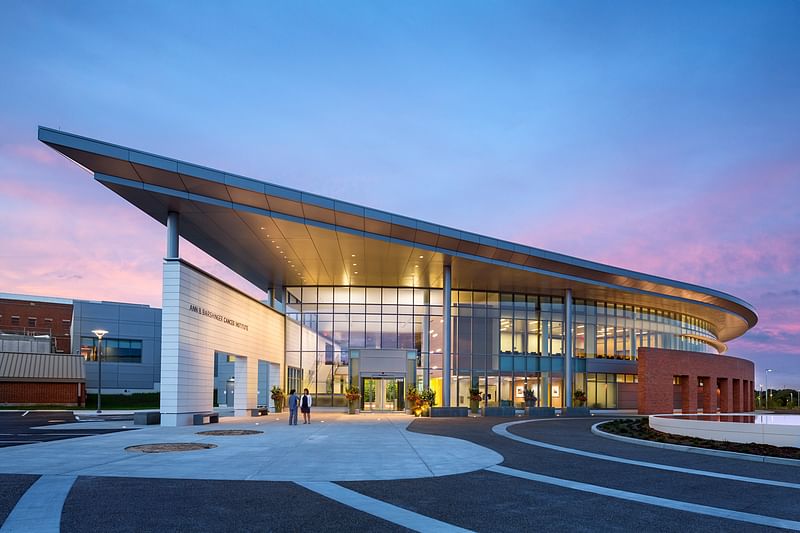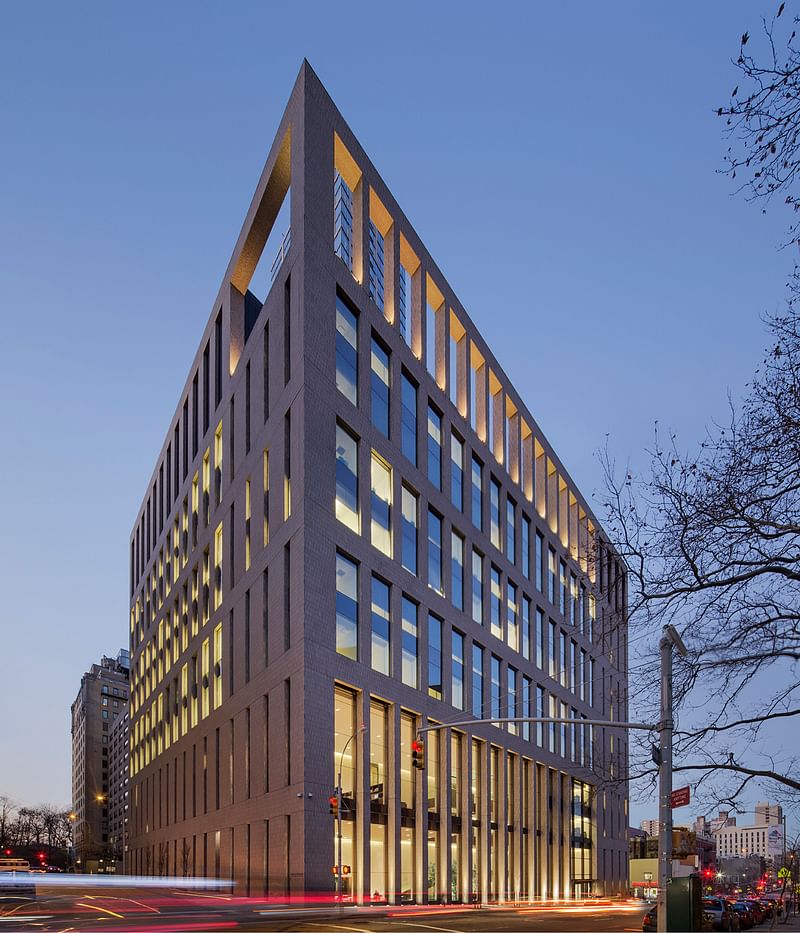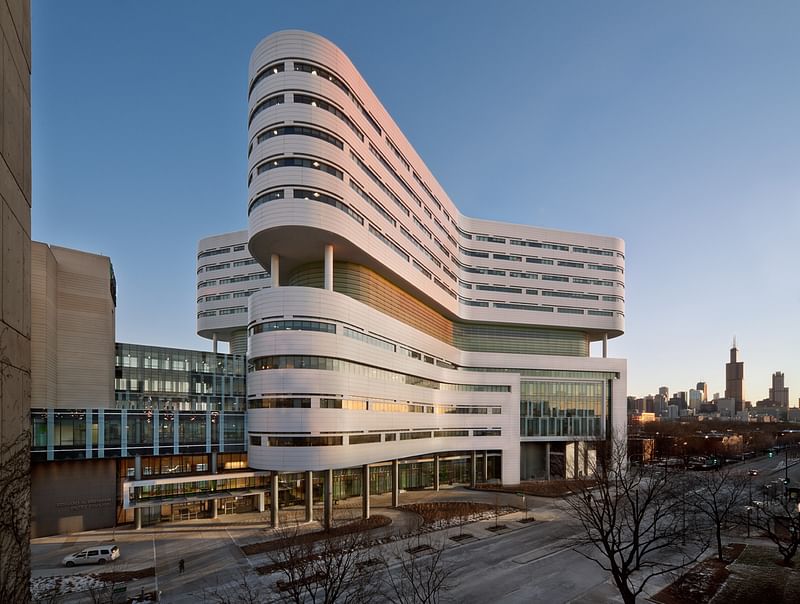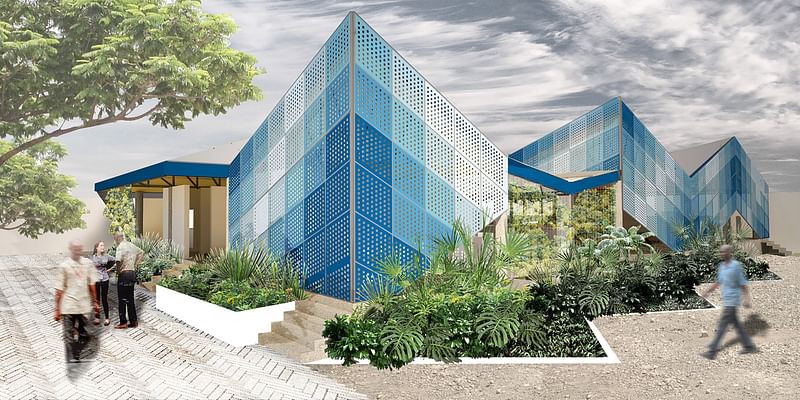Recipients of the AIA 2014 National Healthcare Design Awards
By Bustler Editors|
Friday, Aug 1, 2014

Related
Acknowledging top-notch healthcare building design and health design-related research, eight recipients were recently announced for the AIA 2014 National Healthcare Design Awards. According to the jurors, the winning projects show strengths in solving aesthetic, civic, urban, and social concerns on top of essential hospital functionalities and sustainable concerns.
Projects were evaluated under four categories:
- Category A: Built, Less than $25 million in construction cost
- Category B: Built, More than $25 million in construction cost
- Category C: Unbuilt, Must be commissioned for compensation by a client with the authority and intention to build
- Category D: Innovations in Planning and Design Research, Built and Unbuilt
Have a look at the winning projects below.
CATEGORY A:
Lightwell: Greater Boston Orthodontics; Waltham, Massachusetts
By Merge Architects
Project summary: "A hundred-year-old storefront and warehouse on Main Street in Waltham was gutted, creating an open plan orthodontic clinic – including reception and treatment areas flanked by semi-private offices, toothbrushing stations, exam rooms, and a staff coffee area. The double-height treatment space is framed by an 18-foot-tall backlit translucent wall curving down in section to frame and light the open treatment area. CNC-cut plywood ribs skinned with thin polycarbonate panels funnel light from skylights above. The front waiting space is defined by a custom seating area and digital media bar, wool felt applied to walls, a custom light pendant, and bright custom wall graphics to provide wayfinding."

Legacy ER – Allen; Allen, Texas
By 5G Studio Collaborative
Project summary: "Legacy ER operates a hybrid program offering urgent and 24/7 state-licensed emergency care services within a freestanding building. Conceptualized as a potent reflection of the organization’s identity, the architecture captured the duality of the emergency medical professionals' character, projecting outwardly the knowledge, skill, precision, and decisiveness necessary for the competent practice of emergency medicine and expressing inwardly the gentle, empathic, and humanistic qualities of the persons beneath the robe, realized simply through montaging sharply folded exterior robe of zinc and softly sculpted interior plastered planes. Points of admission of natural daylight and views create apertures that elucidate intersecting tectonic moments."
CATEGORY B:

Lancaster General Health Ann B. Barshinger Cancer Institute; Lancaster, Pennsylvania
By Ballinger
Project summary: "The new 100,000 square foot Ann B. Barshinger Cancer Institute is developed around a progressive model for cancer care and employs an interdisciplinary and patient-centric approach. Focused on regeneration and reconnection to living systems, the building’s radial form derives from an existing elevated, curvilinear arrival / parking court which has become a central courtyard healing garden. The expanded oncology program is arrayed around the garden on two levels. Glazed skins and multiple points of access provide a continuous dialogue between interior and exterior, creating a visually open environment that reduces anxiety and stress for patients and their families."

Mount Sinai Hess Center for Science and Medicine; New York City
By Skidmore, Owings & Merrill LLP
Project summary: "Envisioned as a place of discovery and healing, the striking Mount Sinai Hess Center for Science and Medicine is shaped by its translational research mission and urban context. Located in Upper Manhattan, the center places researchers, clinicians, educators, and patients in an integrated environment with state-of-the-art technology. The 420,000 square foot facility is specifically designed to foster multi-disciplinary interaction through a network of formal and informal settings. The primary design objective was to craft a flexible environment that would be inspiring and supportive for employees while gracious and dignified for patients and their families. Inside, natural light and a warm, simple material palette puts cancer patients at ease."

Rush University Medical Center New Hospital Tower; Chicago
By Perkins+Will
Project summary: "As part of Rush University Medical Center’s 10-year, $1 billion Campus Transformation Project, Perkins+Will planned and designed a new 840,000 square foot state-of-the-art hospital building. Crowned by a butterfly-shaped bed tower designed to minimize steps between staff and patients, the new hospital is comprised of 304 acute and critical care beds, 72 neonatal intensive care beds, and 10 labor and delivery beds. The emergency department contains one of the country’s few bioterrorism preparedness facilities, and is designed to handle large-scale health emergencies. The hospital is one of the largest in the world to be certified LEED Gold."
CATEGORY C:

Children’s Hospital of Richmond Pavilion (CHoRP); Richmond, Virginia
By HKS, Inc.
Project summary: "At the gateway to the medical campus, the Children’s Hospital of Richmond Pavilion consolidates existing pediatric clinics into a compact vertical urban pavilion. The facility is dedicated to providing comprehensive healthcare for children and adolescents and contains a surgery level, three levels of pediatric clinics, a faculty/research floor, and seven levels of parking. Adjacent to some of the city’s most important civic structures, the design establishes a signature identity that embodies VCU’s objective of becoming the region’s premier pediatric academic medical institution. Drawing inspiration from natural elements that are unique to the City of Richmond, the design is intrinsically tied to its location. Themes of sky, water, and forest bring nature to the heart of this urban campus."
CATEGORY D:

Cincinnati Children's Family Pet Center; Cincinnati, Ohio
By GBBN Architects
Project summary: "The Family Pet Center expands the hospital’s pet therapy program with a 250-sf pavilion and lawn areas that accommodate patients whether on foot, in a wheelchair or on a stretcher. In this 8’ by 10’ enclosure, kids reunite with their own pets. Positive effects begin with anticipation days in advance, the visit itself, and the lingering effects of memories or storytelling afterwards. Based on research on the healing benefits of Animal Assisted Therapy (AAT), this pavilion addresses the medical needs of the children and the physical dynamics of pets. Especially for cancer patients, who deal with high levels of stress, pain, and long hospital stays, AAT contributes to recovery by improving the quality of life for patients."

GHESKIO Cholera Treatment Center (CTC); Port-au-Prince, Haiti
By MASS Design Group
Project summary: "The first permanent facility in Port-au-Prince, the CTC provides an aggressive model for cholera treatment, while creating a healing space that promotes a dignified patient experience. Both the CTC’s layout and placement of amenities optimize staff and patient flow. The design tackles unique site conditions, including the lack of reliable piped water and lack of sewer system connection, by providing off-the-grid services. The roof collects rainwater, which is stored in cisterns, chlorinated, and then used for showers and sinks. The facility also decontaminates waste on-site and is designed to achieve 99.99% removal and inactivation of Cholera vibrio and other pathogenic organisms. The façade blends the use of the most advanced technology, using parametric modeling to optimize apertures for daylighting, ventilation, and privacy, with deploying analog techniques for local fabrication. The CTC will not only establish new standards for cholera treatment, but also new standards for quality construction in Haiti."
Jurors for the 2014 National Healthcare Design Awards included:
- Eric Goodfriend, AIA (Chair), Mahlum
- Roger Call, AIA, Herman Miller for Healthcare
- Jim Lennon, Lennon Associates
- James C. Lord II, AIA, KGA Architecture
- Mark Patterson, AIA, SmithGroupJJR
- Mark Tortorich, FAIA, Stanford University
- Shane Williams, AIA, Array Architects.
All photos courtesy of AIA.

Share
0 Comments
Comment as :